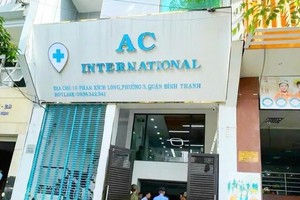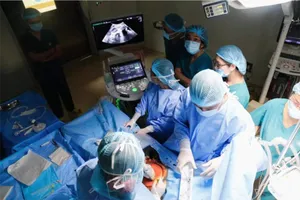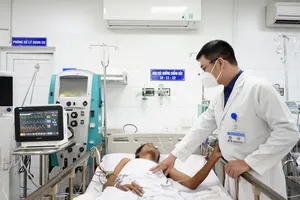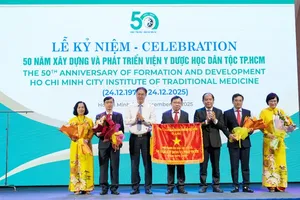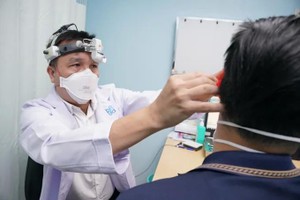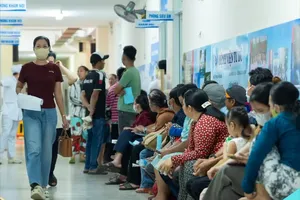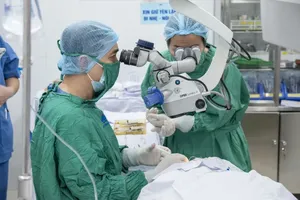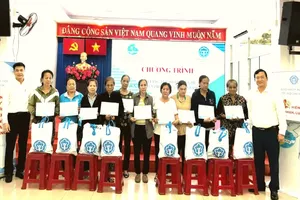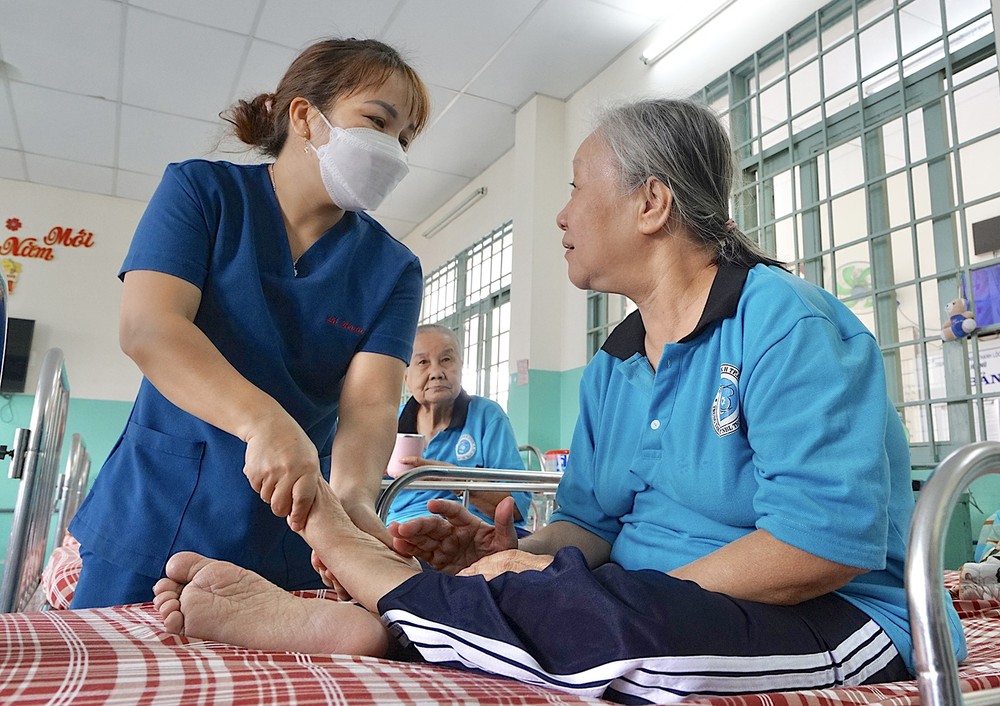
One of the five localities with the highest number of elderly people in Ho Chi Minh City is Binh Hung Hoa A Ward in Binh Tan District. By the end of March 2024, this locality had 8,608 elderly/123,000 people under the management of the local government.
Chairman Le Van Ut of the Elderly Association of Binh Hung Hoa A Ward said that previously, the ward had 372 residential groups, so taking care of the elderly was difficult due to a lack of personnel. Implementing Resolution 11/2024 of the People's Council of Ho Chi Minh City on the establishment, separation and merger of residential quarters and hamlets, Binh Hung Hoa A Ward has been arranged into 52 neighborhoods from 1 to 52. The staff in 52 neighborhoods include 468 people who are more convenient in taking care of senior citizens.
He added that in 2023, Ho Chi Minh City piloted the implementation of a plan for free health check-ups and early detection of non-communicable diseases for the elderly in the area to prevent diseases, reduce treatment costs and increase the quality of life for the elderly. Currently, the association is coordinating with the local party committee and government to create a list of elderly people who come for free health checks at the ward medical station, trying to complete it in the third quarter of 2024, Mr. Le Van Ut said.
86 year old Cao Duc Thuan in Binh Hung Hoa A Ward shared that elderly people often have many chronic diseases, and only well-off families can afford medicine and treatment costs. In addition to the government’s free medical check-up, staff and medical collaborators bring test results to the houses of oldsters.
Vietnam officially entered the population ageing in 2011 with the elderly accounting for 10 percent of the population. It is forecast that by 2049, Vietnam will become a super-aged society with the proportion of people aged 60 and over accounting for 25 percent of the population. Of the nearly 17 million elderly people today, the number of elderly people from 60 to under 70 years old is over 9.4 million, about 5 million people from 70 to under 80 years old and over 1.9 million people from 80 to under 90 years old. There are 623,221 people from 90 to under 100 years old and 41,048 people from 100 years old and above.
The Red River Delta is the region with the highest number of the elderly, accounting for 28 percent. The lowest is in the Central Highlands region with 4 percent. The average life expectancy is around 73.7 years, but only people around 65.3 years old lead healthy lives while the remaining suffer a double burden of diseases (about 95 percent of the elderly have diseases, mainly chronic non-communicable diseases).
Serious shortage of elderly care facilities
According to the Ministry of Labor, Invalids and Social Affairs, there are currently 425 social assistance establishments nationwide, including 190 public establishments and 235 non-public establishments. However, only 46 facilities are responsible for caring for the elderly, and the remaining 222 facilities care for people with disabilities and children. Some 102 medical facilities provide general medical treatment while 32 establishments provide mental health care and there are 23 social work centers.
According to Associate Professor Nguyen Trung Anh, Director of the Central Geriatric Hospital cum Chairman of the Vietnam Geriatrics Association, the healthcare system has not met the increasing needs of the elderly. Only 49/63 general hospitals in provinces and cities have geriatric departments. More than 900 medical examination departments have private rooms for the elderly and over 10,000 beds are for elderly patients. There are only nearly 1,800 medical staff trained in geriatrics.
These numbers do not meet the medical examination and treatment needs of 95 percent of the sick elderly. In reality, hospitals have recorded that on average, an elderly person has 3-7 chronic diseases, so medical costs and care burden are 7-10 times higher than that of young people. Meanwhile, the average monthly income of the elderly is only about VND538,000 a person mainly from social welfare and pensions. Over 5 percent of the 17 million elderly do not have health insurance cards. Without health insurance, they will not be able to afford medical examination and treatment costs, leading to more serious illness, said Associate Professor Nguyen Trung Anh.
Le Van Thanh, former Head of the Socio-Cultural Research Department of the Ho Chi Minh City Institute for Development Research, noted that currently there are 4 types of care for the elderly and in-home elder care is the main type. In Ho Chi Minh City, 99.5 percent of the elderly are cared for at home, a few are cared for in centralized facilities, mainly the alone elderly or those without enjoying social welfare policies. However, the number of social support facilities is also lacking, some provinces and cities do not have public nursing centers or homes.
According to experts, to ensure the quality of health care for the elderly, it needs to be gradually transferred from family to society. One of the most important policies is to give support to businesses participating in the health care of the elderly, specifically investing in the construction of centers and nursing homes because the current demand is very huge, but investing in this field is not easy.
At the same time, it is necessary to strengthen specialized training in geriatrics for medical staff and promote international cooperation in training geriatric human resources.
HCMC Chairman urges investment in better people's healthcare
From 2022, the number of people over 60 years old in Ho Chi Minh City reaches 1.033 million - accounting for 12.24 percent of the city's total population. This is considered a milestone for the city to officially enter the phase of population aging, which is a big challenge in taking care of the health and spirit of the elderly. Therefore, the city aims to increase the average life expectancy of the elderly to 76.8 years by 2025 and 77 years by 2030, of which the healthy life expectancy is at least 67 years by 2025 and 68 years by 2030.
The city continues to maintain and expand the activities of 144 elderly clubs to help the elderly and 144 volunteer groups to take care of the health of lonely elderly in the community in 144 communes, wards and towns. All sick elderly will be examined and treated by 2025 which will be carried out until 2030. The elderly who are lonely, seriously ill, and cannot go for medical examination and treatment at a medical facility will receive medical examination and treatment at their residence, reaching 70 percent in 2025 and 100 percent in 2030.
Facing population challenges and the goals of improving the quality of people's health care, the city has implemented many specific solutions and projects such as the application of artificial intelligence (AI) in medical examination at the health station in Thanh An Island commune in Can Gio outlying district, early detection of non-communicable diseases for over 1 million elderly in the period 2024-2025 and the following years, pilot additional human resources for medical stations according to population size; cooperation with the Cuban Ministry of Health to pilot the family doctor model; health collaborator network policy.
The city also researches to have new directions, plans, and policies to develop comprehensive health care, meeting the requirements of being a health care center for the country and the region to contribute to the improvement of people's quality of life, life expectancy and lowering medical costs.

